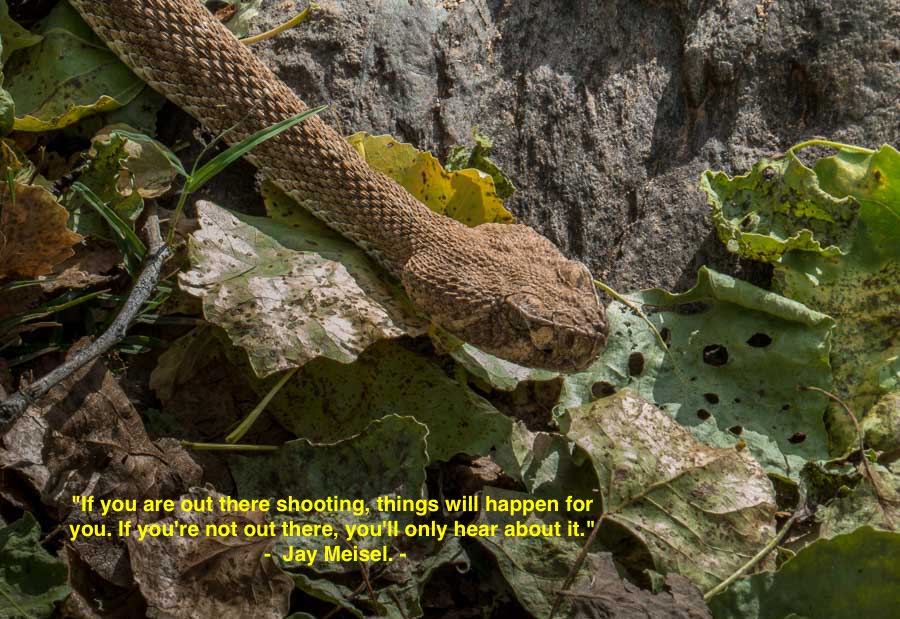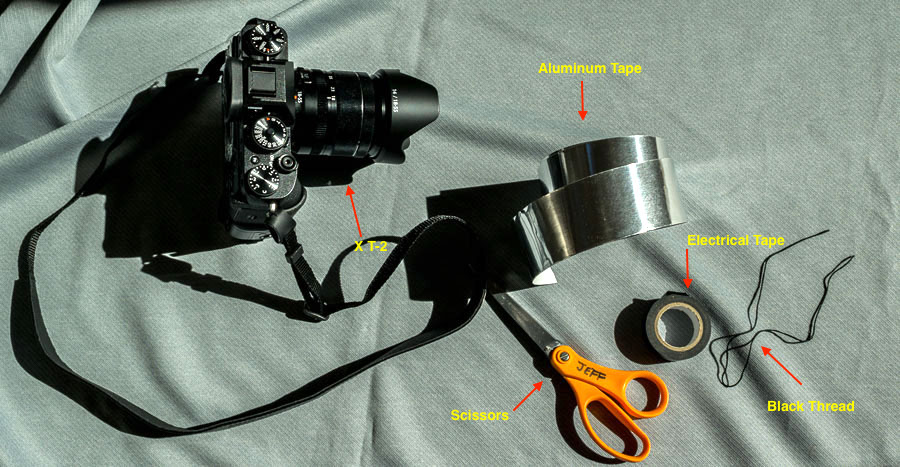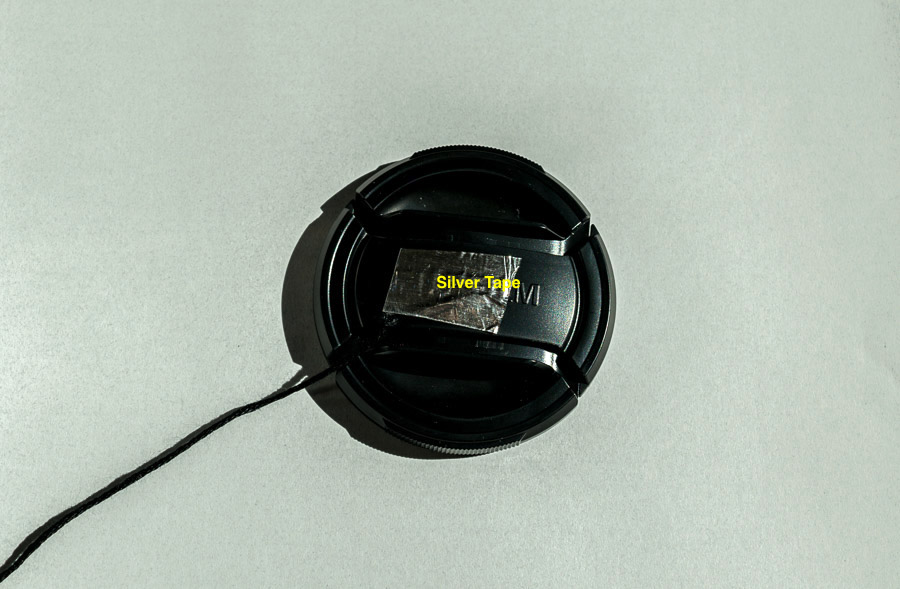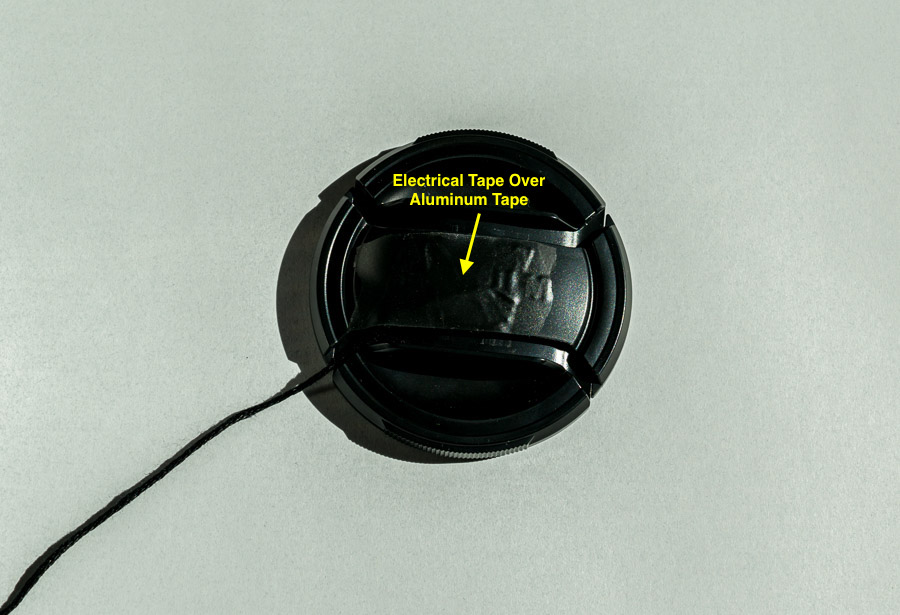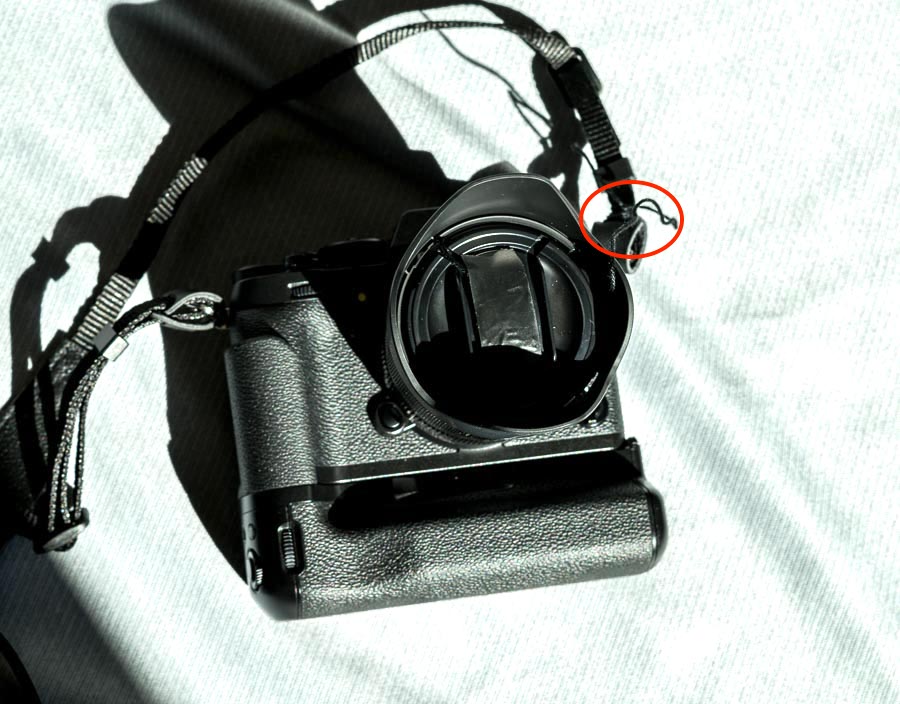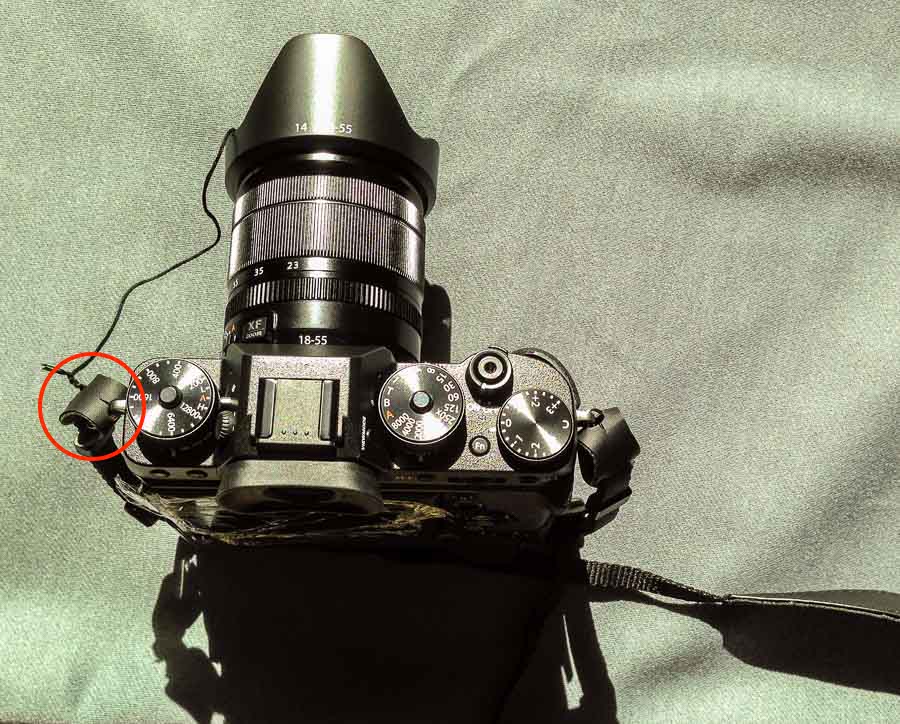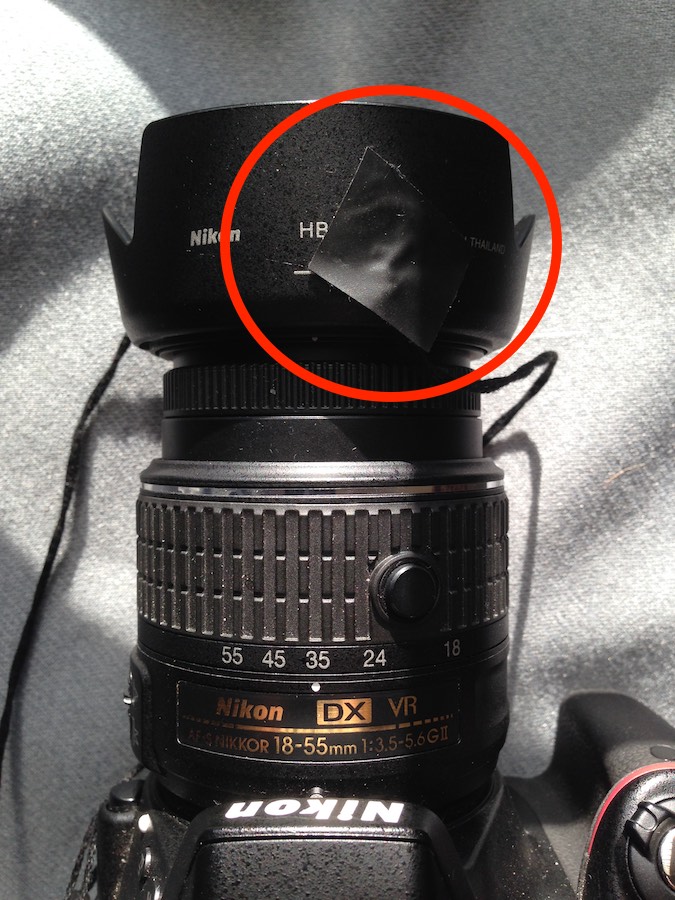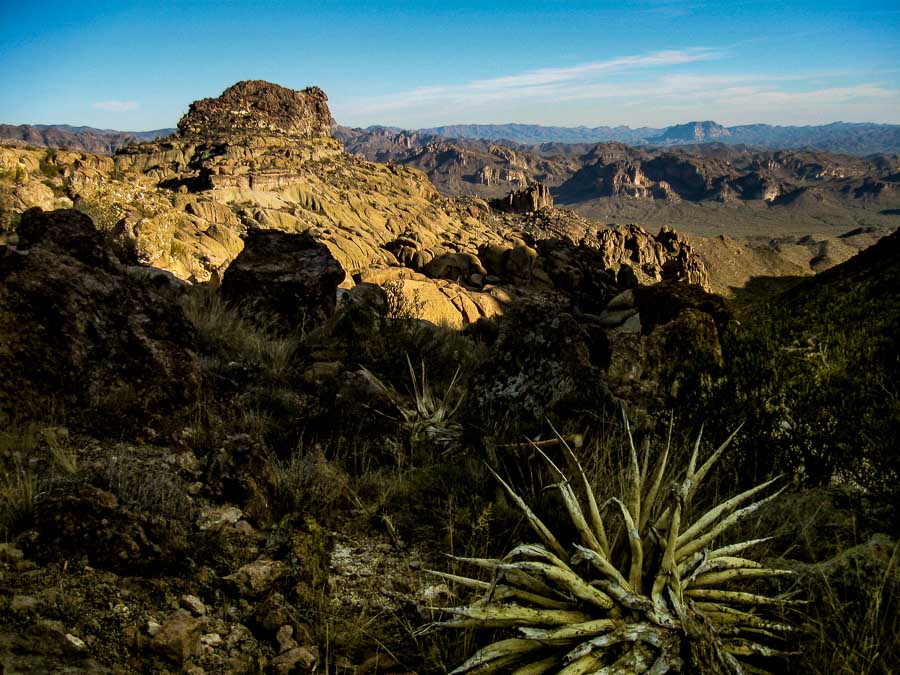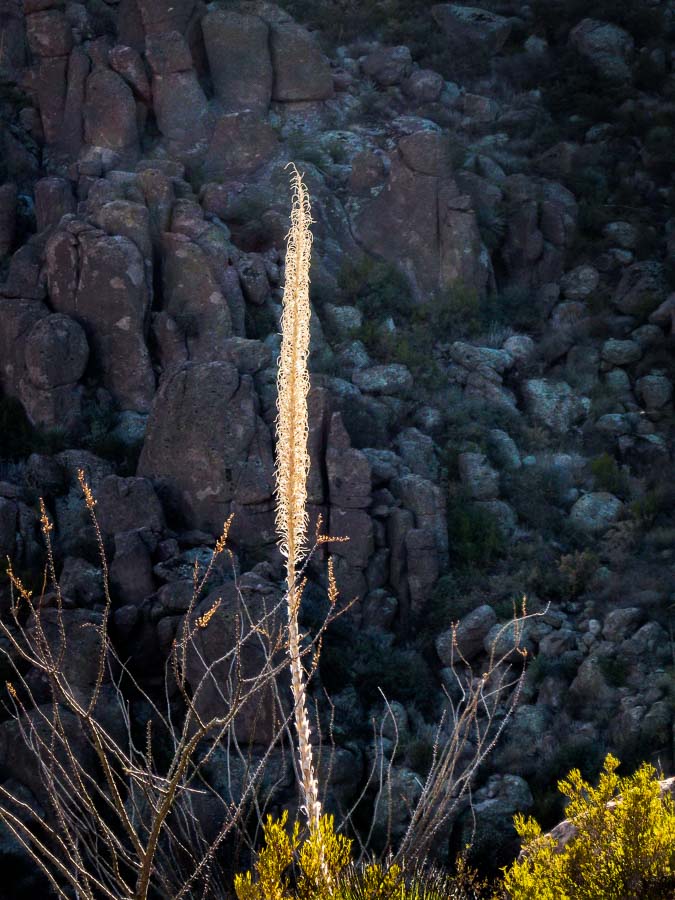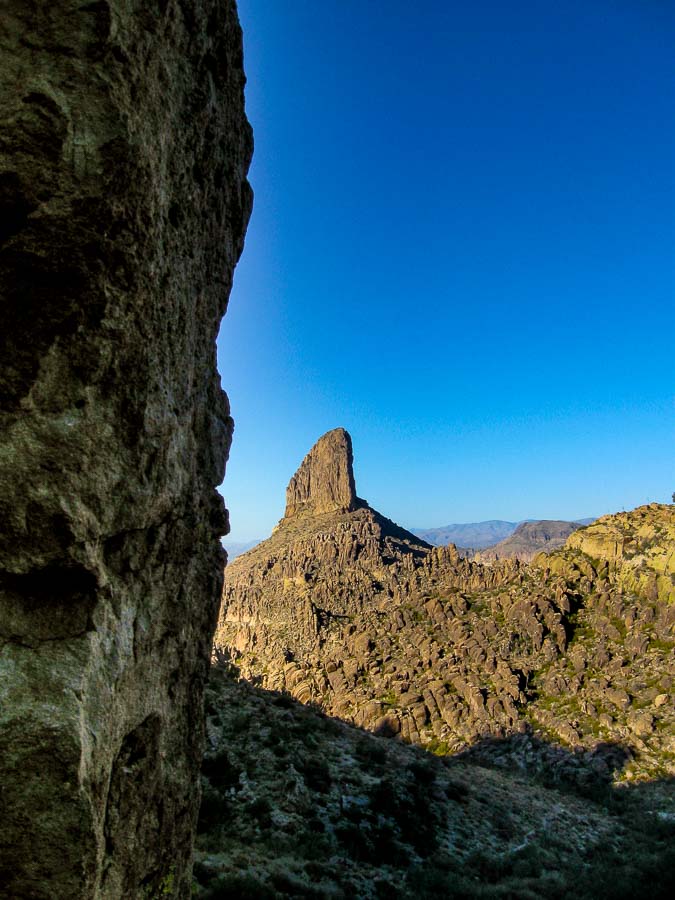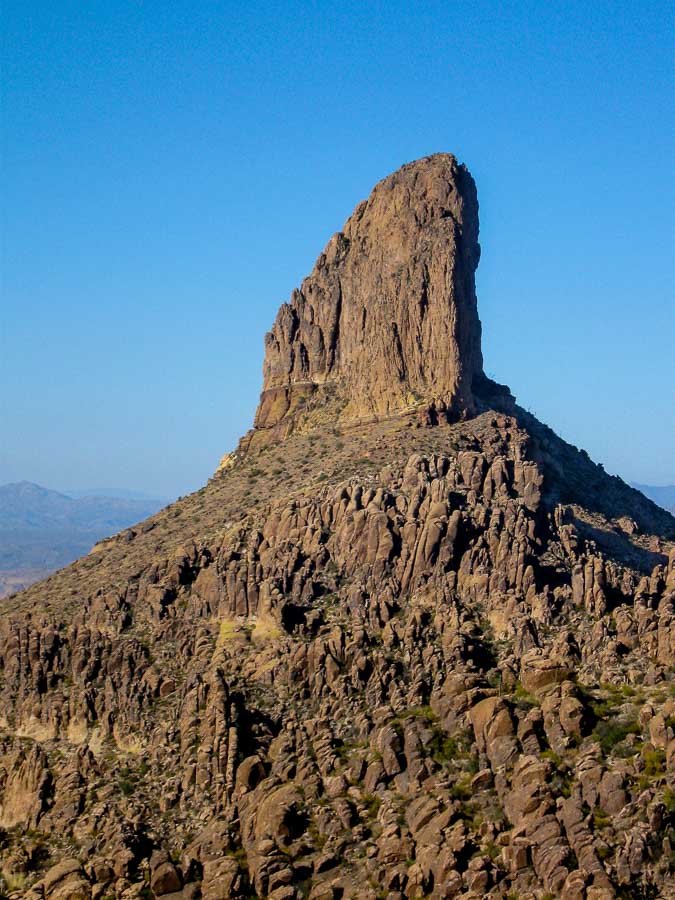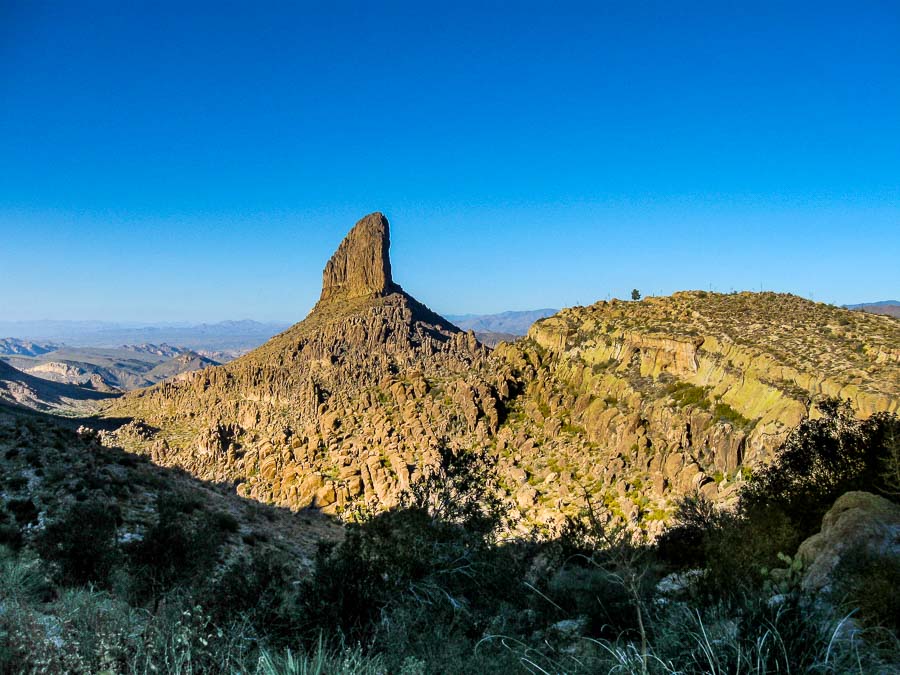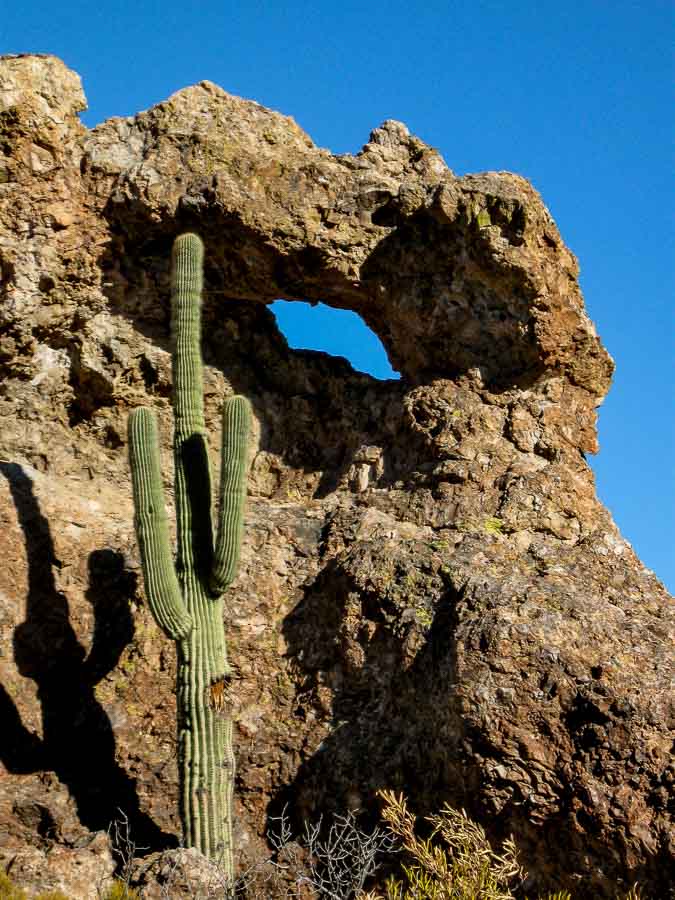Here is a problem every novice or occasional birder is bound to face…
We were enjoying a beautiful hike through Zumwalt Meadow in Kings Canyon, CA observing all of the plants, scenery and wildlife we encountered.
Keep in mind that much of this trail has tree roots, rocks, boulders, fallen branches, etc. so keeping eyes ahead or up is not an option for those hiking along. We would stop when a sudden motion or noise caught our attention or we just wanted to gaze at the scenery. We are avid gazers and thus would probably be considered somewhat pokey when it comes to the more speedy hikers.
But I digress… We were climbing upward through a somewhat narrow corridor formed by boulders on either side and ahead, no more than twenty feet away, an attractive multi-colored bird landed in a tree. I was almost sure this was one that I hadn’t identified yet so of course I was very interested in photographing the bird for future identification.
NOTE – For those who want to know why I didn’t or more truthfully, couldn’t, identify the bird right there and then, read my earlier post – Photography and Birding: Good Photo, Bad Photo
The bird was mostly black, with orange-brown sides, a buff bottom and rump with white markings on black wings. The face also had some blotches of other colors as well. Immediately I thought this was an oriole of one type or another.
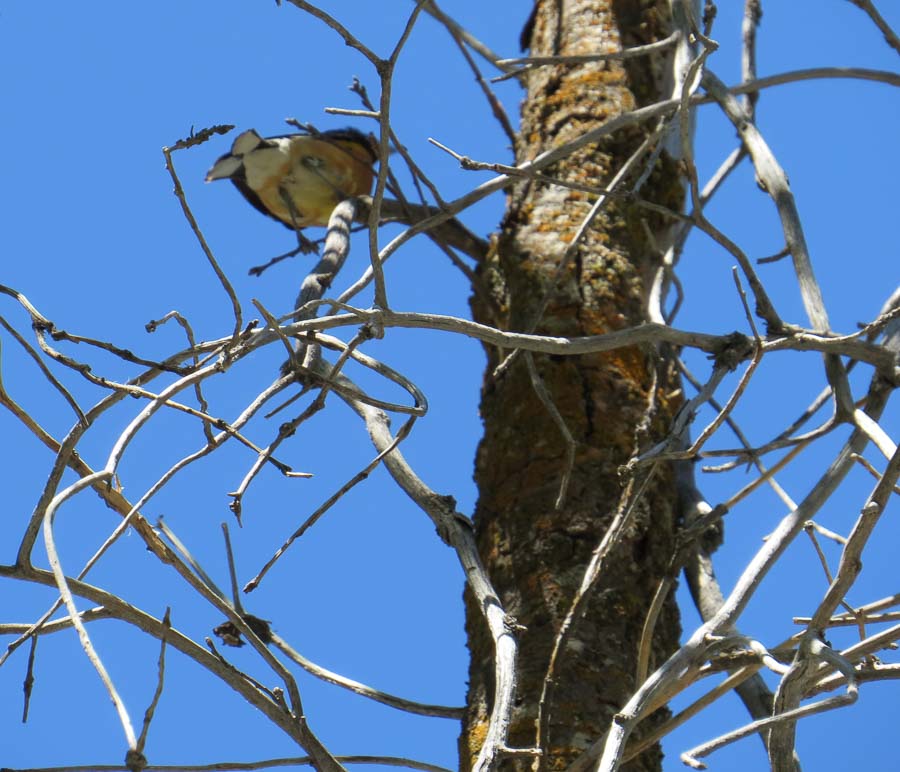
By the time I was able to stop and take note, the bird was flitting from branch-to-branch and this (above) was the first photograph I was able to capture. Hmmmm – pretty hard to ID from that shot.
What was infuriating was that the bird would jump down closer to me, let’s say eight feet away, but would be among a mass of branches; drats!

There was one instance, when the bird was just above my head and I got a good luck at its rump and underparts.
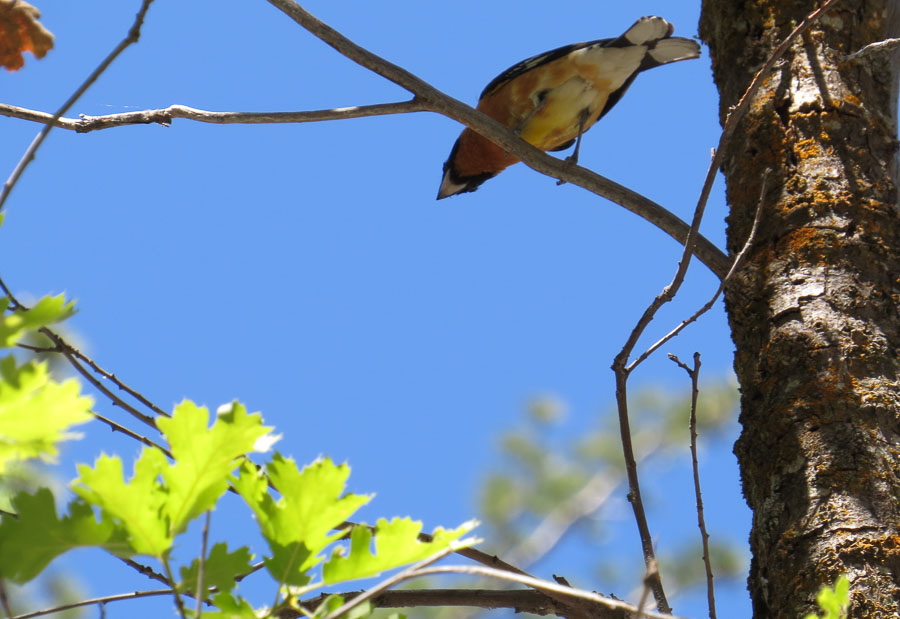
Although the bird was skittish, it appeared to have a certain curiosity as it lingered in the area for a long time; in bird minutes!
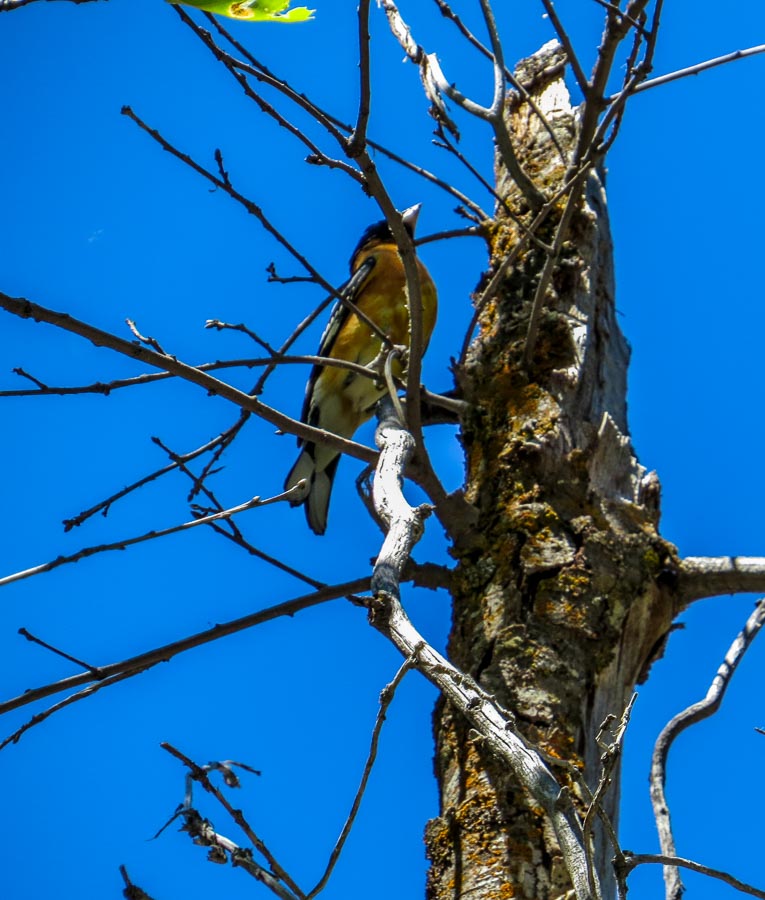
In the field it is hard to tell exactly how good the photographs are and whether or not there would be enough information to piece an identification together, but using all of the photos, I believe I was able to correctly ID the bird.
Let’s take a look….
Using the Internet, I was able to find a few reference photographs. This was one of the better shots
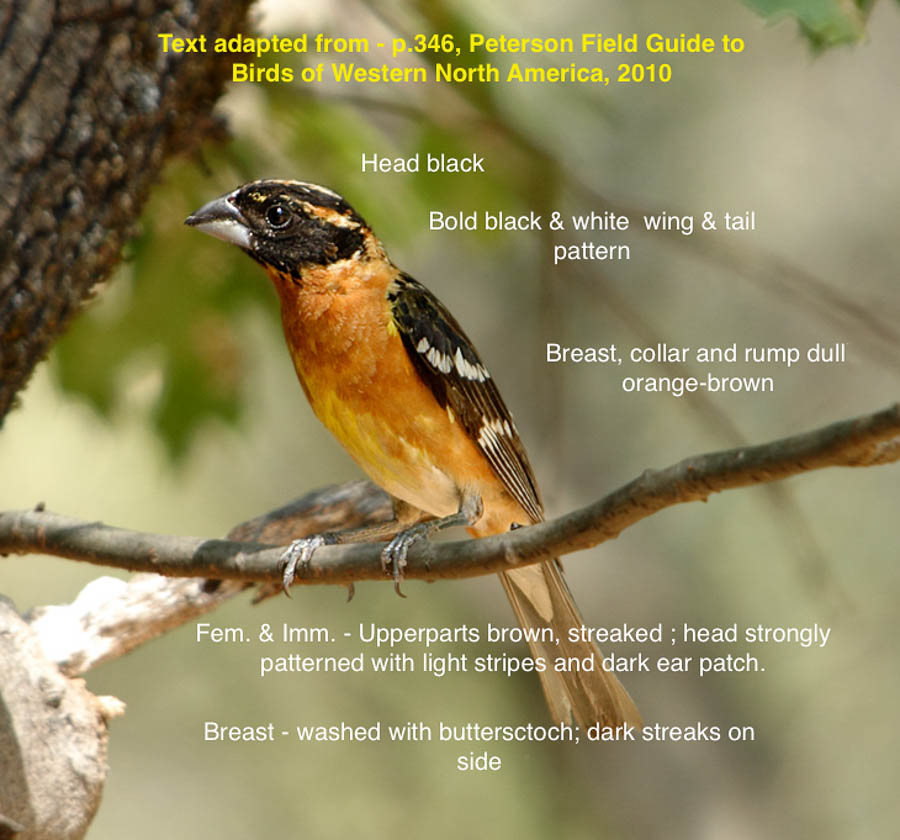
Photograph By Alan Vernon – Male Black headed grosbeak (Pheucticus melanocephalus)Uploaded by Snowmanradio, CC BY 2.0, https://commons.wikimedia.org/w/index.php?curid=12140735
NOTE – Text added by JBRish
Looking at my less than stellar photos, I was able to locate most of the same markings. For those new to birding, keep in mind that males and females often have different markings and colorations. I knew this wasn’t an oriole as I originally suspected primarily because of the shape of the beak. An oriole would have a much more pointed beak.
NOTE – This is why I like to take multiple photographs and work the identification at my leisure.
What are your thoughts? Leave them in the comment section below.
To read more JBRish.com posts about birds or birding, click HERE.
**********
All original content on this blog is copyrighted by Jeffrey B. Ross with ALL Rights Reserved. While reference links back to JBRish.com are appreciated and encouraged, please acquire approval for any reproduction of original content from this website.
©Jeffrey B. Ross – 2017
